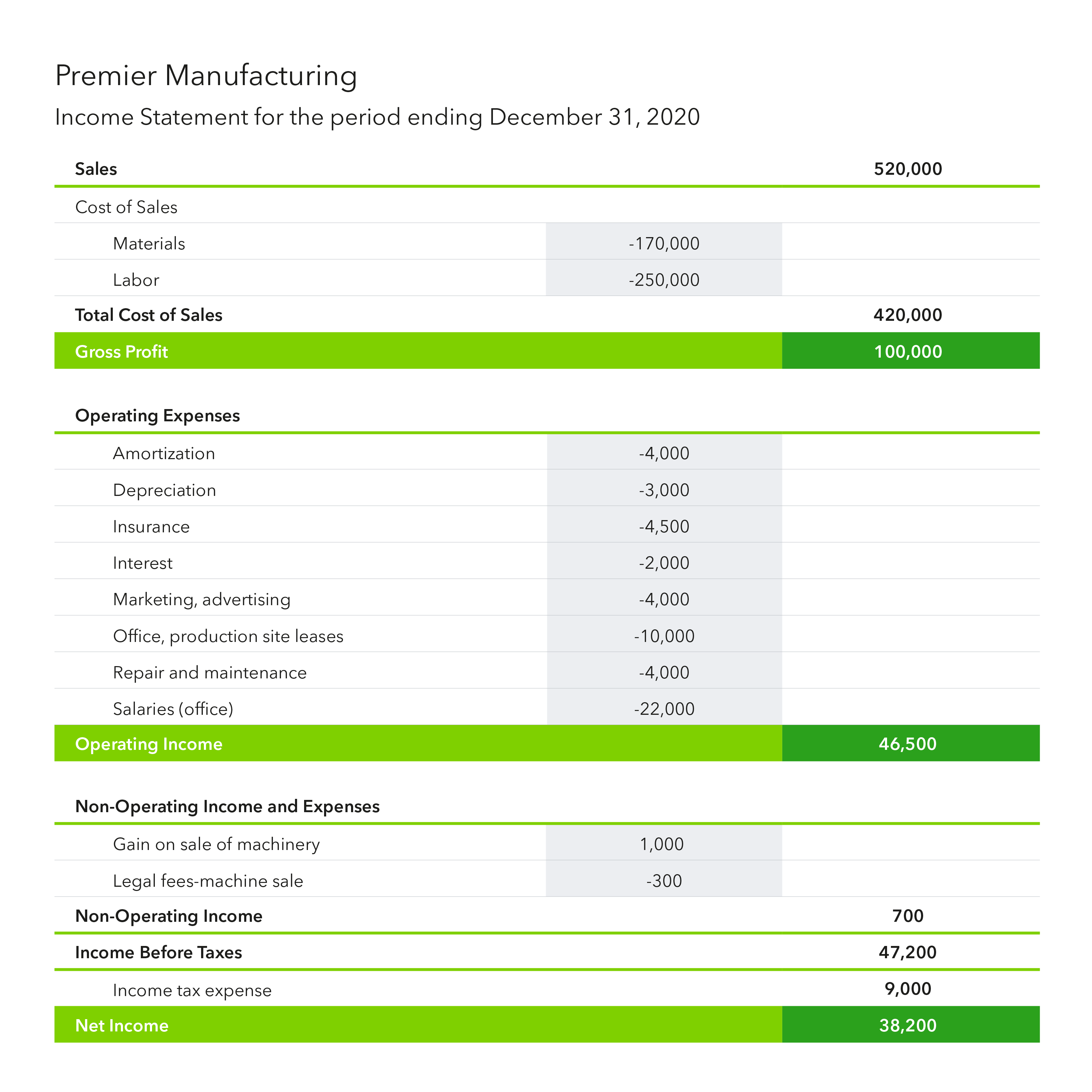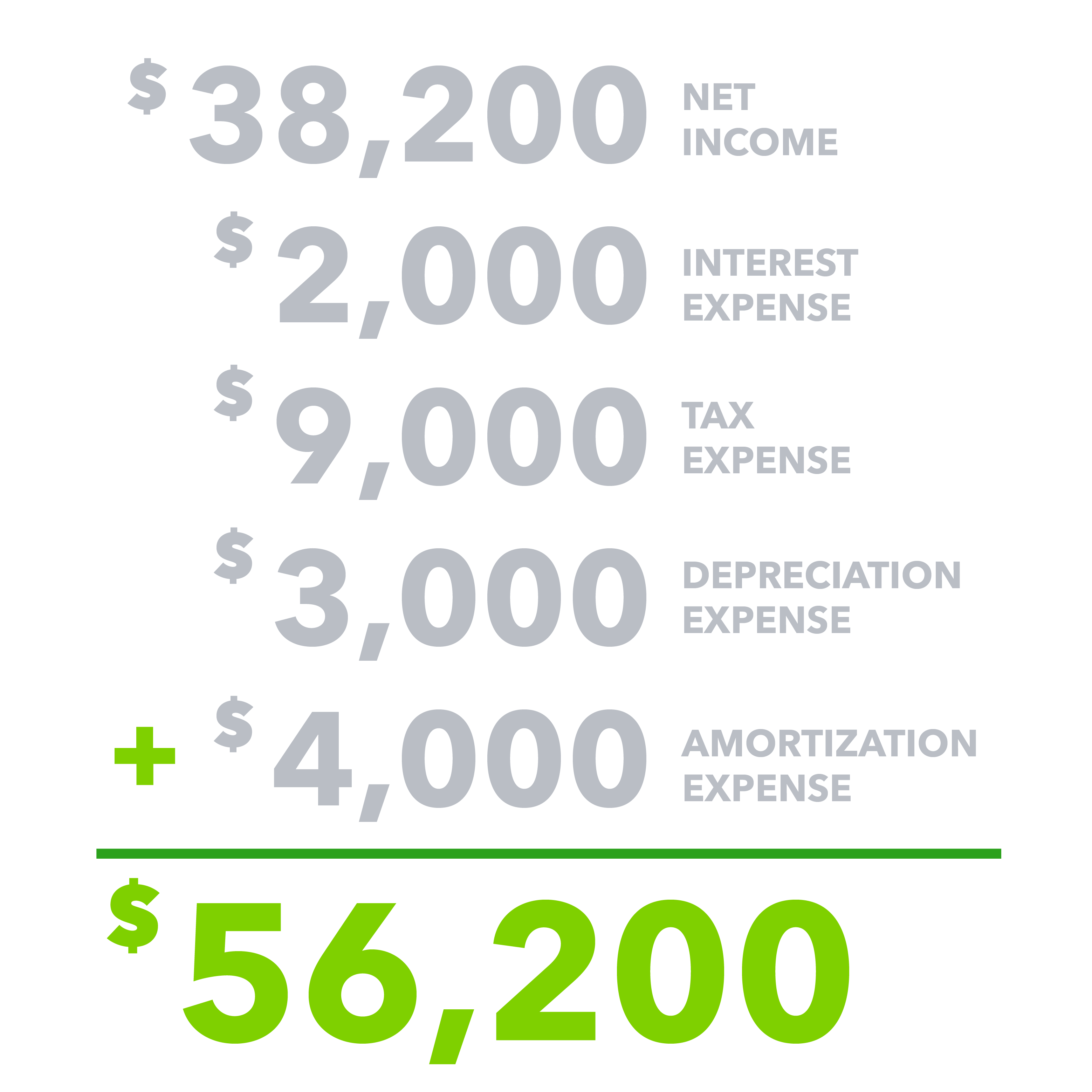You’re overwhelmed with information, so you need useful metrics to make decisions. Many business owners use EBITDA and the EBITDA margin—calculations that take information from the income statement. Use this guide as a starting point to help you decide if you’ll use the EBITDA calculation. You’ll also want to understand the relationship between debt, taxes, cash flow, and a company’s profitability.

EBITDA: Definition, formula, and how to use it
What is EBITDA?
EBITDA is “earnings before interest, taxes, depreciation, and amortization.” This calculation is a measure of a company’s profits. But it’s important to note that EBITDA is different from net income (or net profit).
Depreciation expenses post to recognize the decline in value of capital expenditures, including vehicles, machinery, and equipment. Amortization expenses record when intangible assets produce revenue. The bottom line is that every asset’s value reclassifies into non-cash expenses over time.
A company’s net income is total revenue minus expenses. EBITDA will add back four expense categories to the net income calculation. If a business generates a profit, net income will be less than the EBITDA balance because net income includes more expenses.
Calculating EBITDA can provide several reporting insights and help you make informed decisions about a company’s earnings. You can compare your financial performance to similar companies and assess the profitability of core operations.
Understanding the EBITDA formula
To understand EBITDA, review the multi-step income statement formula: revenue minus the cost of sales and operating expenses plus non-operating income.
The income statement and cash flow statement cover a period of time, but a balance sheet generates on a specific date. All three reports address financial health and a company’s operating performance.
To explain the EBITDA formula, take a look at Premier Manufacturing’s multi-step income statement.

The formula includes the following components:
- The cost of goods sold includes material and labor costs directly related to the product or services sold. Sales minus the cost of sales equals gross profit.
- Operating expenses include a product’s indirect costs, including amortization, depreciation, and interest expense.
- Gross profit minus operating expenses equals operating income. Premier has both non-operating income and expenses. The net amount ($700) is added to operating income to determine income before taxes.
- Income before taxes minus income tax expense equals net income.
Operating income is generated from day-to-day business operations, while non-operating income is unusual or infrequent. Premier is a manufacturer and not an equipment retailer. So the income and expense from the machine sale posts to non-operating income.
Some business owners use EBIT, or earnings before interest and taxes, to assess a company’s ability to produce an operating profit. However, EBITDA is the more common metric to measure a company’s financial performance.
How to calculate EBITDA
Multi-step income statements may vary slightly, but the EBITDA formula’s components should be easy to find. Interest, depreciation, and amortization expenses are operating expenses. The tax expense calculation is at the end of the statement.
The EBITDA formula follows:
Net income + interest expense + tax expense + depreciation expense + amortization expense = EBITDA

Using the formula, we find that Premier’s 2020 EBITDA balance is $56,200.
What is a good EBITDA margin?
The EBITDA margin is EBITDA divided by revenue. Most companies do not include a gain on sale as revenue if the gain is a non-operating income category. In Premier’s case, the gain on a machinery sale is not revenue. The only revenue category is $520,000 in sales.
Premier’s EBITDA margin is $56,200 divided by $520,000 revenue, or 10.8%. So Premier earns nearly 11¢ for every dollar of revenue.
To determine if an EBITDA balance is attractive, consider a company’s EBITDA over time and how the balance compares with industry benchmarks. If the balance increases from year to year, the business is increasing sales and controlling costs. The trend makes the company more valuable.
Potential buyers use EBITDA to compute the purchase price because the owner can distribute earnings as dividends. If two companies generate sales of $3 million a year, the company with the higher EBITDA is more valuable.
Why is EBITDA so important?
Those who use the EBITDA formula prefer to analyze a company’s performance based on day-to-day business operations. They disregard debt (interest costs), taxes, depreciation, and amortization. Premier’s business operations include manufacturing, purchasing raw materials, paying employees, and billing customers. If you’re using EBITDA, you need to understand how debt and taxes can differ between companies.
EBITDA and debt management
A company’s capital structure has a big impact on the amount of debt a business carries and the interest expense. Every business needs capital to operate. Companies issue stock or borrow money to raise capital. Capital structure refers to the percentage of money a company raises by issuing stock or debt.
A startup without a history of predictable earnings may not be able to borrow money and may raise capital using stock. Banks are willing to loan money to established companies that can repay debt using a consistent flow of earnings.
Another factor is the number of assets needed for a particular company to operate. Some industries, such as banking, must raise a large amount of capital to hire employees, invest in technology, and operate physical locations. An online business may be able to operate with far less capital.
Pay close attention to the dollar amount of debt added back to earnings. High levels of debt generate more interest expense and require more cash for principal and interest payments.
EBITDA and taxes
Two companies in the same industry that generate similar profits can have very different tax expenses. The tax code is complex, and dozens of factors impact a company’s tax expense in a particular year.
For example, a tax carry-forward allows businesses to reduce current year earnings with losses incurred in past years. If a business uses a tax carry-forward, it lowers the tax expense in the current year. When the lower tax expense is added back to earnings, the current year EBITDA is lower.
How EBITDA and cash flow differ
Generally accepted accounting principles (GAAP) require companies to use the accrual basis of accounting to generate financial statements. Using the accrual method can generate large differences between EBITDA and cash flow.
The accrual method requires businesses to recognize revenue when they earn it and expenses when they incur revenue. Businesses don’t use cash inflows and outflows to determine revenue, expenses, or net income.
Assume that Premier purchases $1,000 in materials in January and pays $2,000 in labor costs in February to produce a piece of furniture. They finish the product and deliver it in early March for $4,200.
Accrual accounting requires Premier to post the $4,200 in revenue and $3,000 in material and labor costs in March. Premier incurs other costs, including shipping, but the profit on the sale was $700.
This approach matches expenses and revenue in the same period and presents a more accurate picture of the profit.
EBITDA vs. cash flow
If you use the accrual basis to calculate net income, EBITDA will not reveal information about cash inflows and outflows.
The furniture sale example didn’t explain when Premier paid cash for the material and labor costs. Nor did it explain when the customer paid cash for the purchase. Premier earned a $700 profit, but the data provided didn’t explain the company’s cash inflows and outflows.
EBITDA is a useful tool to analyze profit but not cash flows. To understand a company’s cash position, review the statement of cash flows.
What to do next
When you produce your financial statements each month and year, generate the EBITDA balance. Compare the balance to past periods, and determine if the trend is increasing or decreasing. Compare your performance to other businesses in your industry. Tools like QuickBooks Advanced can help you learn more about your business finances and perform more detailed analyses in less time.










